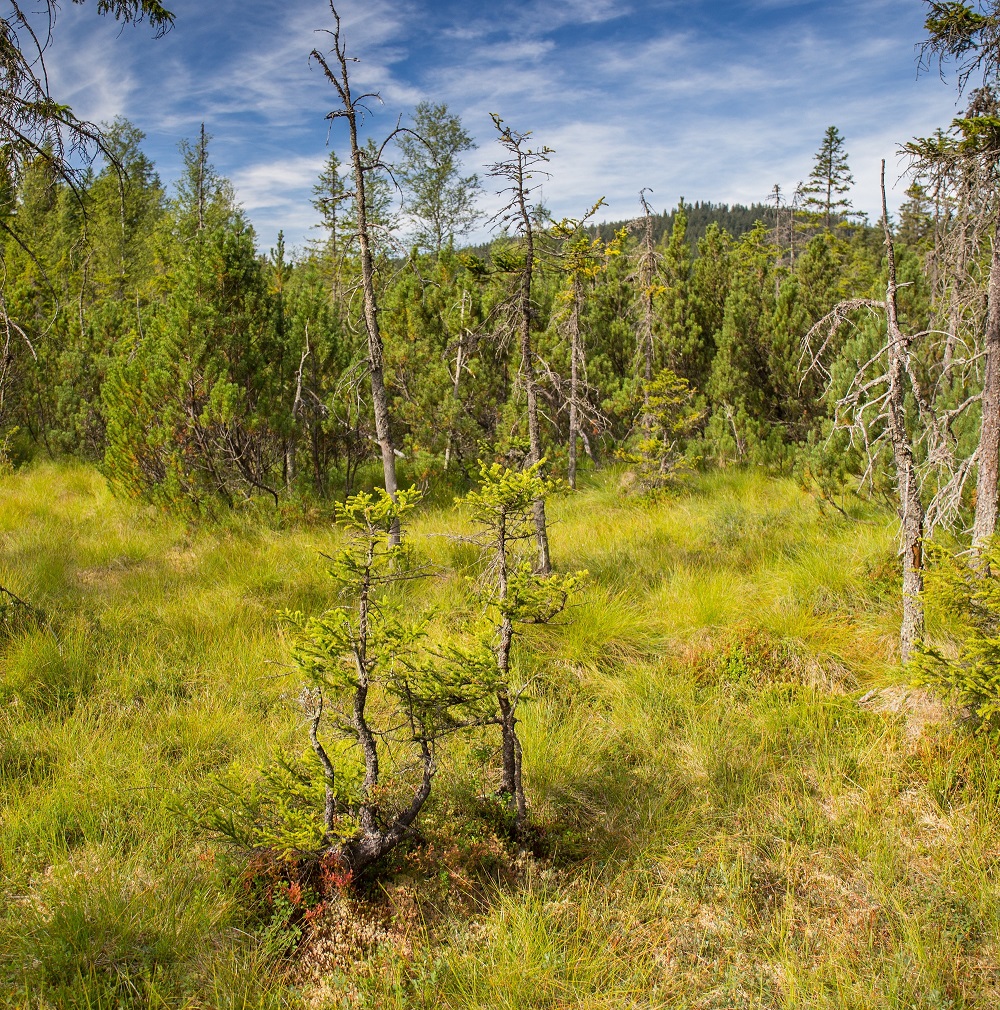 Peatland vegetation is composed mostly of mosses, graminoids and ericoid shrubs, and these have a distinct impact on peat biogeochemistry. We studied variation in soil microbial communities related to natural peatland microhabitats dominated by Sphagnum, cotton-grass and blueberry. We hypothesized that such microhabitats will be occupied by structurally and functionally different microbial communities, which will vary further during the vegetation season due to changes in temperature and photosynthetic activity of plant dominants. This was addressed using amplicon-based sequencing of prokaryotic and fungal rDNA and qPCR with respect to methane-cycling communities. Fungal communities were highly microhabitat-specific, while prokaryotic communities were additionally directed by soil pH and total N content. Seasonal alternations in microbial community composition were less important; however, they influenced the abundance of methane-cycling communities. Cotton-grass and blueberry bacterial communities contained relatively more α-Proteobacteria but less Chloroflexi, Fibrobacteres, Firmicutes, NC10, OD1 and Spirochaetes than in Sphagnum. Methanogens, syntrophic and anaerobic bacteria (i.e. Clostridiales, Bacteroidales, Opitutae, Chloroflexi and Syntrophorhabdaceae) were suppressed in blueberry indicating greater aeration that enhanced abundance of fungi (mainly Archaeorhizomycetes) and resulted in the highest fungi-to-bacteria ratio. Thus, microhabitats dominated by different vascular plants are inhabited by unique microbial communities, contributing greatly to spatial functional diversity within peatlands.
Peatland vegetation is composed mostly of mosses, graminoids and ericoid shrubs, and these have a distinct impact on peat biogeochemistry. We studied variation in soil microbial communities related to natural peatland microhabitats dominated by Sphagnum, cotton-grass and blueberry. We hypothesized that such microhabitats will be occupied by structurally and functionally different microbial communities, which will vary further during the vegetation season due to changes in temperature and photosynthetic activity of plant dominants. This was addressed using amplicon-based sequencing of prokaryotic and fungal rDNA and qPCR with respect to methane-cycling communities. Fungal communities were highly microhabitat-specific, while prokaryotic communities were additionally directed by soil pH and total N content. Seasonal alternations in microbial community composition were less important; however, they influenced the abundance of methane-cycling communities. Cotton-grass and blueberry bacterial communities contained relatively more α-Proteobacteria but less Chloroflexi, Fibrobacteres, Firmicutes, NC10, OD1 and Spirochaetes than in Sphagnum. Methanogens, syntrophic and anaerobic bacteria (i.e. Clostridiales, Bacteroidales, Opitutae, Chloroflexi and Syntrophorhabdaceae) were suppressed in blueberry indicating greater aeration that enhanced abundance of fungi (mainly Archaeorhizomycetes) and resulted in the highest fungi-to-bacteria ratio. Thus, microhabitats dominated by different vascular plants are inhabited by unique microbial communities, contributing greatly to spatial functional diversity within peatlands.
Keywords: Sphagnum, vascular plant, peatland, prokaryotes, fungi, soil microbial community
